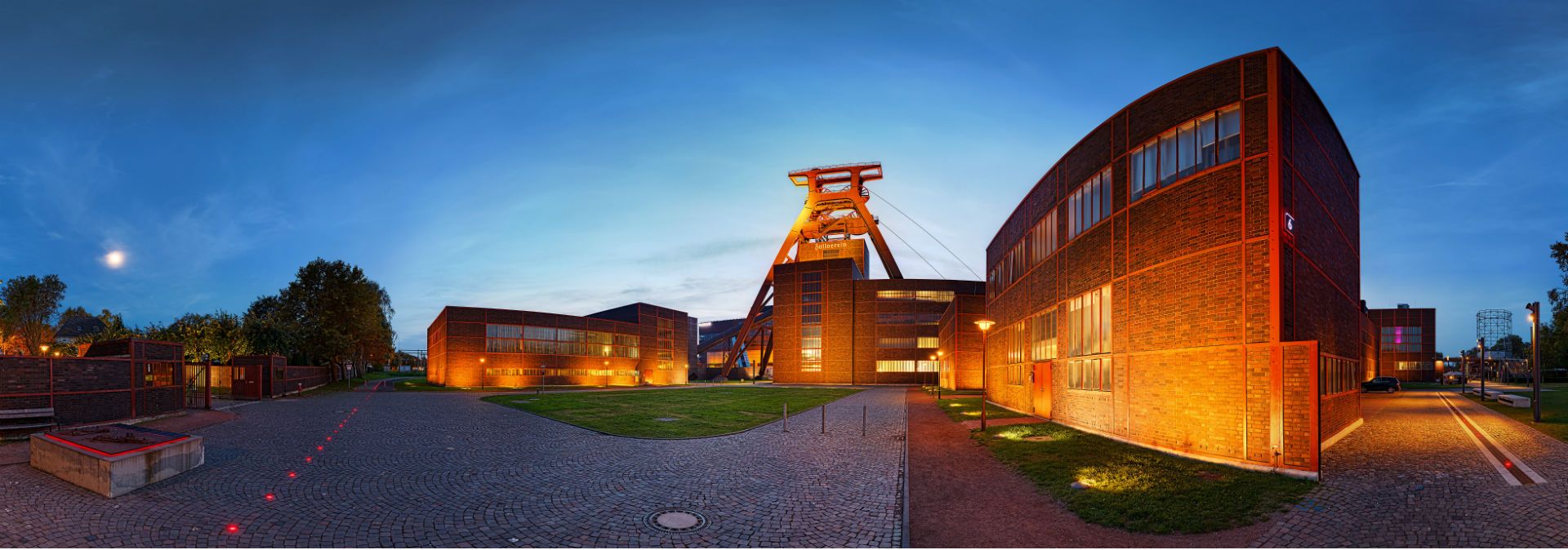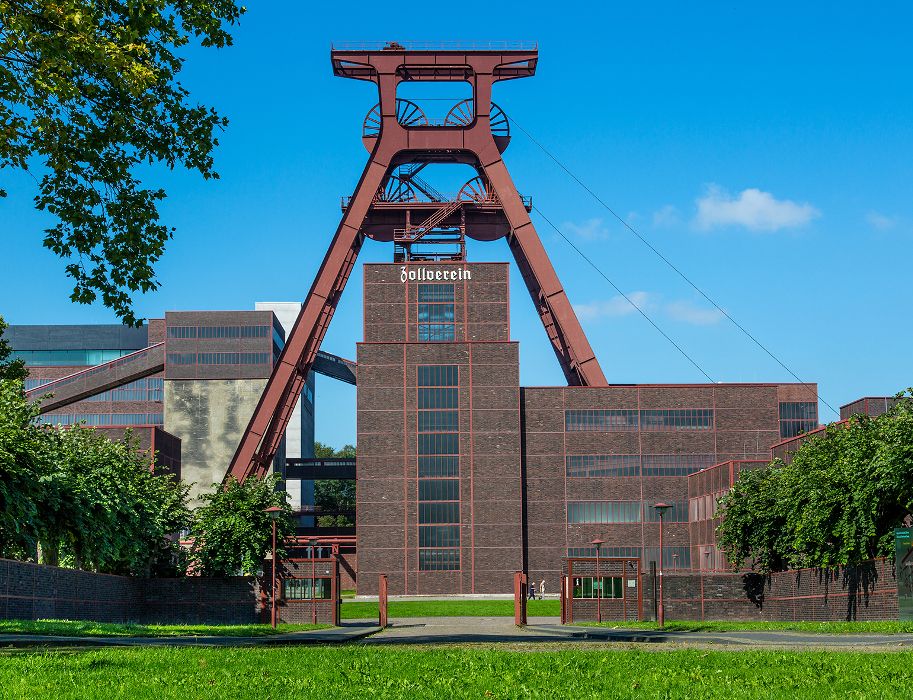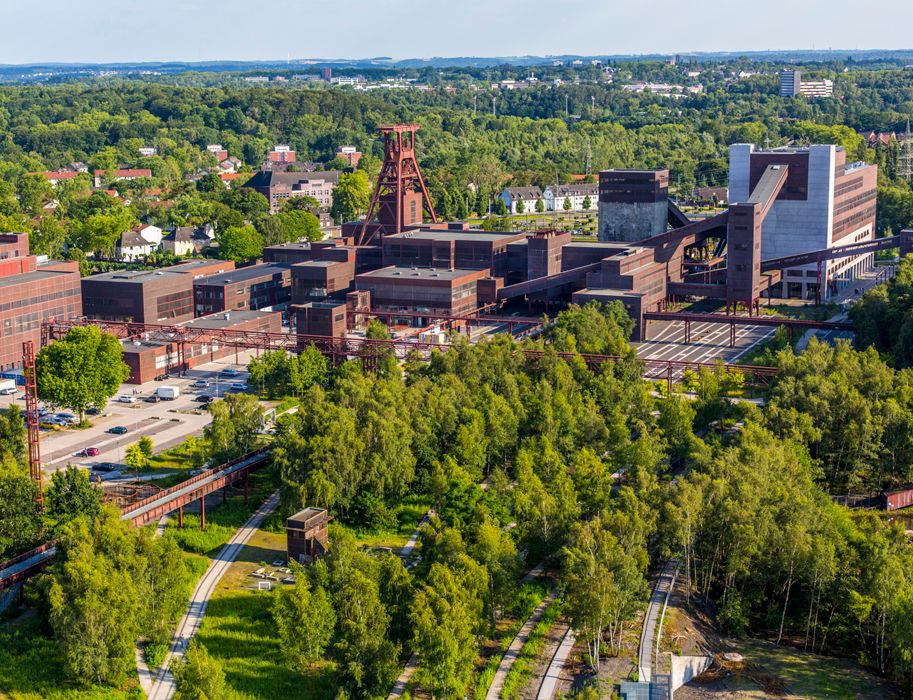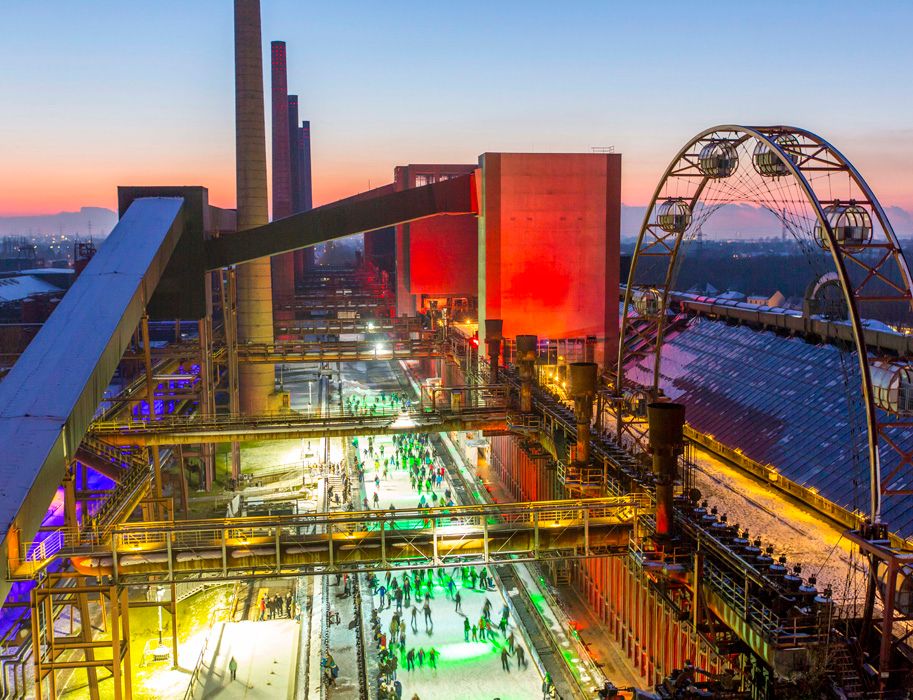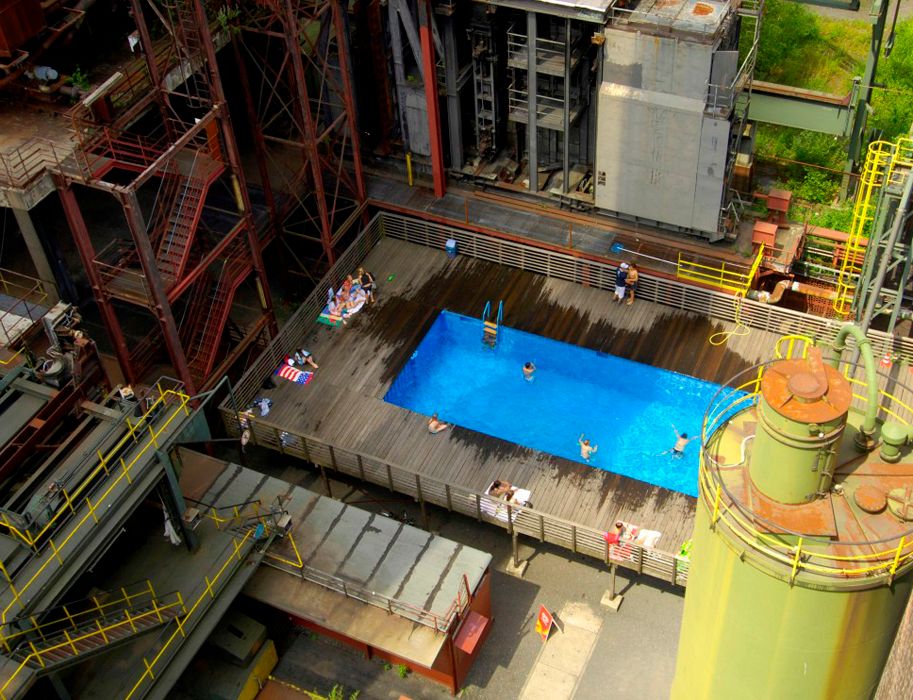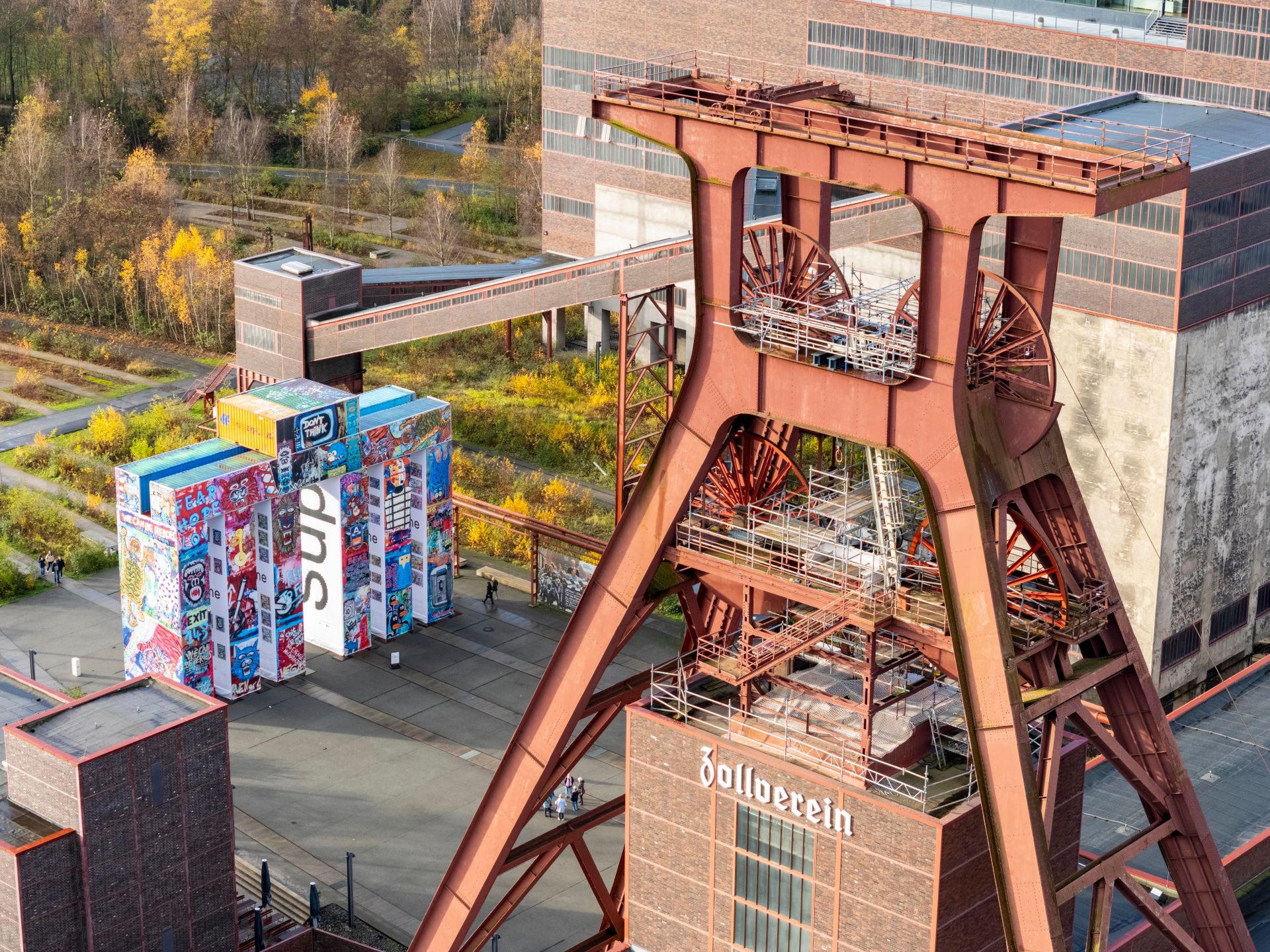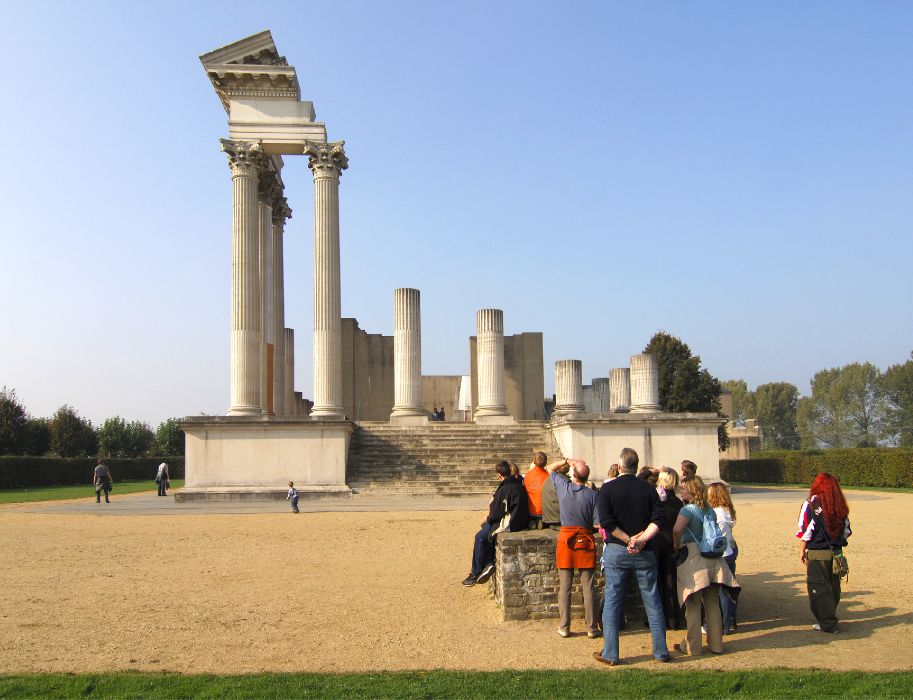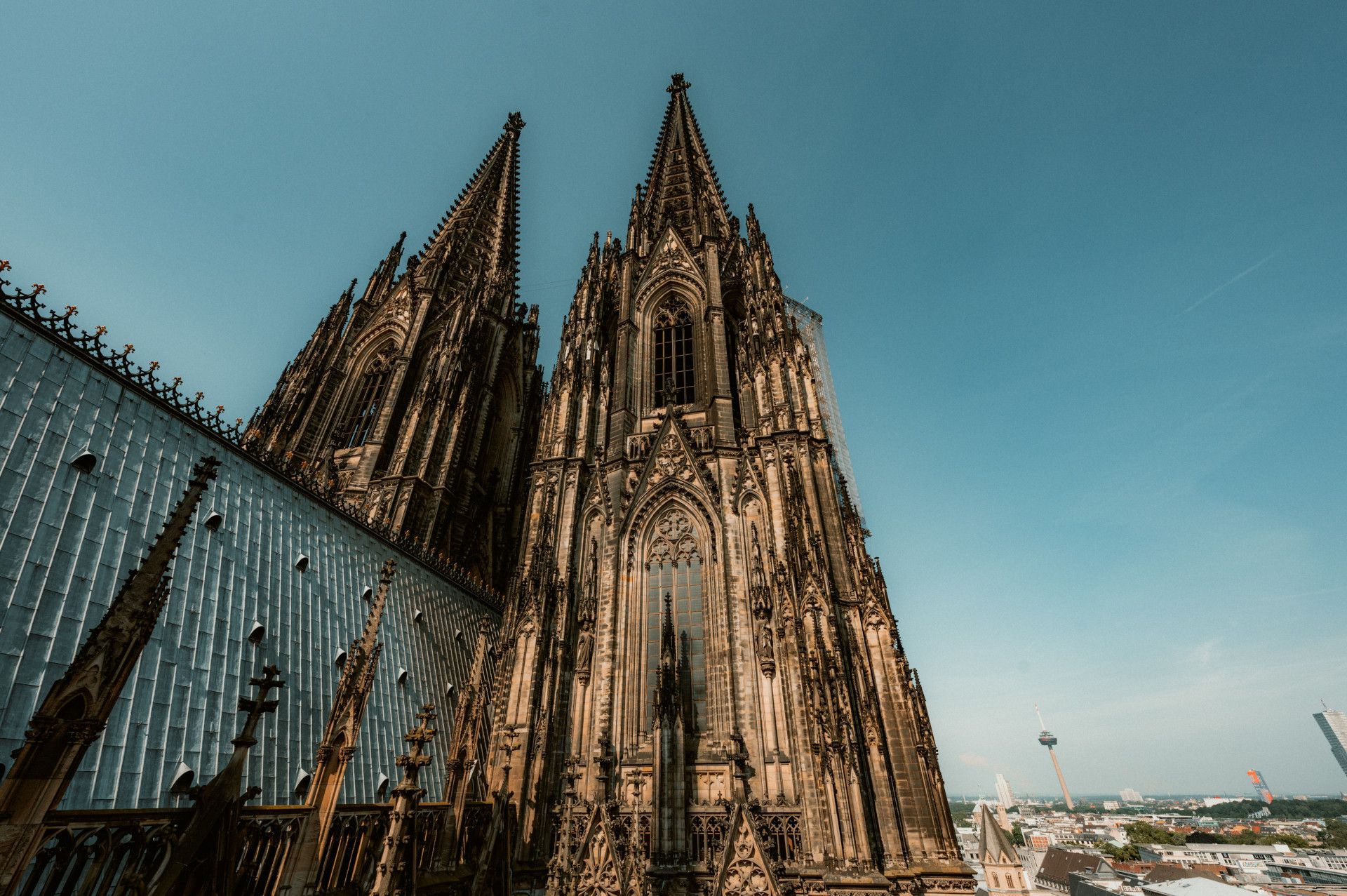In the past, people worked here, today the Zollverein World Heritage Site offers industrial culture at its finest: art, concerts, festivals and sports facilities meet an impressive backdrop.
The Zollverein Coal Mine and Coking Plant Industrial Complex, which was designated a UNESCO World Heritage Site in 2001, is one of the most impressive industrial monuments in the world. Since the last shift in 1986, Zollverein has been transformed into a site for art, culture and the creative industries, attracting around 1.5 million visitors every year. It symbolizes the structural change in the Ruhr metropolis like no other building.
The world's largest coal mine
During its active industrial period, the Essen colliery was the largest coal mine in the world, and the coking plant was larger than any other in Europe. In addition to its extraordinary size, the architecture of the Zollverein complex is also outstanding - it is not for nothing that Zollverein is also known as the most beautiful colliery in the world. The famous Doppelbock winding tower is today the best-known landmark in the Ruhr area and a symbol of the industrial culture of an entire region.
Monument trail and museums
The numerous guided tours on the Zollverein Monument Trail offer a particularly good insight into the time when the facilities were still active. Visitors follow the "path of coal" along huge stationary machines in the colliery's surface facilities and the coking plant's production facilities. If you want to find out more about life and everyday life in the Ruhr region, you can view a multimedia exhibition and a 360° film in the Portal of Industrial Heritage in the former coal washing plant. The portal is connected to the authentically preserved part of the Zollverein Shaft XII site via a footbridge. Passing machines and conveyor belts, you reach the viewing platform on the roof of the coal washing plant, which offers an impressive view over the Ruhr region.
Imposing orange escalators take visitors up to the Ruhr Museum, where they can learn more about the past and present of the Ruhr region in the permanent exhibition that creates a sense of identity or in the spectacular temporary exhibitions. The different exhibition levels, on which the natural and cultural history of the region is presented, are connected by seemingly red-hot staircases.
Design fans will also be thrilled by the Red Dot Design Museum in the boiler house, which was converted by star architect Norman Foster and is also located on the Zollverein site. In the inspiring industrial setting, visitors can discover around 2,000 objects that are characterized by their outstanding design.
Festivals and concerts
In summer in particular, the World Heritage Site hosts numerous events such as concerts, open-air cinema and a gourmet festival. Other highlights include the contemporary art ruhr (C.A.R.) art fair and festivals such as Extraschicht and the Ruhrtriennale.
Nature from all over the world
Between the huge eye-catchers made of steel and stone, there are small attractions that are often only noticed on closer inspection: Plants from all over the world have settled on the fallow land. Summer lilacs and Japanese knotweed from Asia, black locust, evening primrose and goldenrod from North America, narrow-leaved ragwort from South Africa have arrived here by transporting goods, by the wind or by humans and animals.
But numerous native, sometimes rare and protected animal and plant species also live in the shadow of the Unesco World Heritage Site. In some places, a dense stand of red oak, black alder, weeping cherry and black elder has developed, while in other places birch, willow and bramble bushes form a wild "industrial forest". A 3.5-kilometre circular promenade around the Zollverein Park leads cyclists, pedestrians, joggers and nature lovers through the partly exotic, partly indigenous flora.Frogs, toads and newts live in the wetlands of the large fallow area, which can be discovered on a torchlight tour.
Sport and discoveries
An ice rink awaits sporty guests in winter, where visitors can skate amidst the spectacular industrial architecture. Driving becomes a very special experience after dark, when the light installation by British artists Jonathan Speirs and Mark Major bathes the coking plant in blue and red light. In summer, Zollverein is a magnet for anyone looking to cool off, as they can take a dip in the free Werksschwimmbad pool during the NRW summer vacations. The pool was created in 2001 as part of an art project from two overseas containers welded together and was actually only intended for one swimming season. However, due to its great success, it now opens every summer.
If you get hungry in between, you shouldn't miss a visit to the Casino Zollverein restaurant. It is worth a visit for its premises alone: high concrete walls and relics from the industrial past are combined with wood, mirrors and chandeliers. The menu features miners' fare reinterpreted to a high standard.
